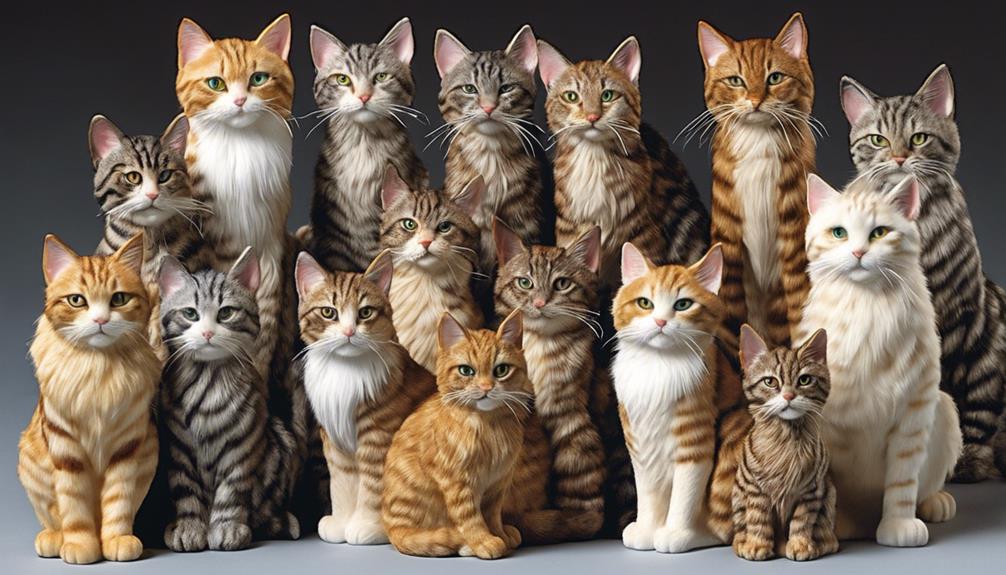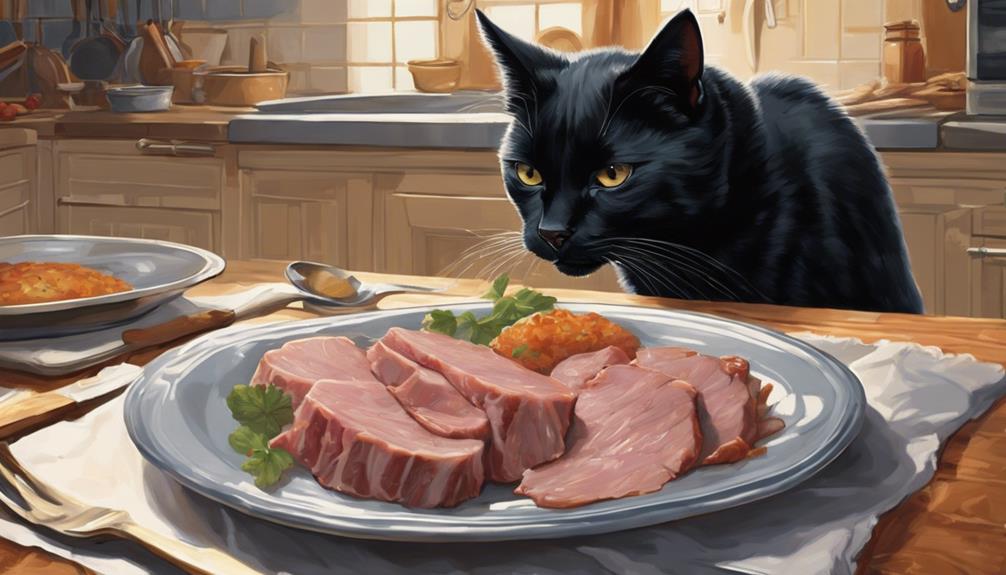When considering top tabby cat names, iconic choices like Tiger, Luna, Simba, Oliver, and Bella stand out. Tiger embodies wild elegance, Luna reflects magic, Simba channels bravery, Oliver exudes timeless charm, and Bella radiates warmth. Whiskers play a pivotal role, indicating curiosity and emotions. Specific names like Ginger suit orange tabbies, Chloe adds sophistication, and Milo exudes warmth and familiarity. Each name captures unique traits that make your tabby cat special. Additional names await to bring personality and charm to your beloved feline companion.
Key Takeaways
- Tiger: Embodies wild elegance and strength, perfect for tabbies with a fierce aura.
- Luna: Reflects magic and wonder, ideal for both male and female tabby cats.
- Simba: Evokes bravery and leadership, inspired by 'The Lion King'.
- Oliver: Timeless charm and versatility, fitting for sociable tabby cats.
- Bella: Exudes warmth and affection, a beloved choice for tabbies.
Tiger
Why do tabby cats named 'Tiger' embody a sense of wild elegance and strength? The name 'Tiger' perfectly encapsulates the essence of tabby cats with their distinct striped coat patterns reminiscent of their larger feline cousins in the wild. When you bestow the name 'Tiger' upon your tabby companion, you're acknowledging their natural grace and powerful presence. This choice highlights the majestic and fierce appearance that many tabby cats exude, especially those with bold markings that command attention.
Not only does 'Tiger' evoke images of strength and confidence, but it also serves as a timeless moniker that suits both male and female tabby cats exuding a tiger-like aura. By choosing this name, you're celebrating the unique and striking features of your tabby cat's coat pattern, emphasizing their individuality within the feline kingdom. So, if you seek a name that captures the untamed elegance of your tabby cat, 'Tiger' stands out as a top choice among tabby cat names.
Luna
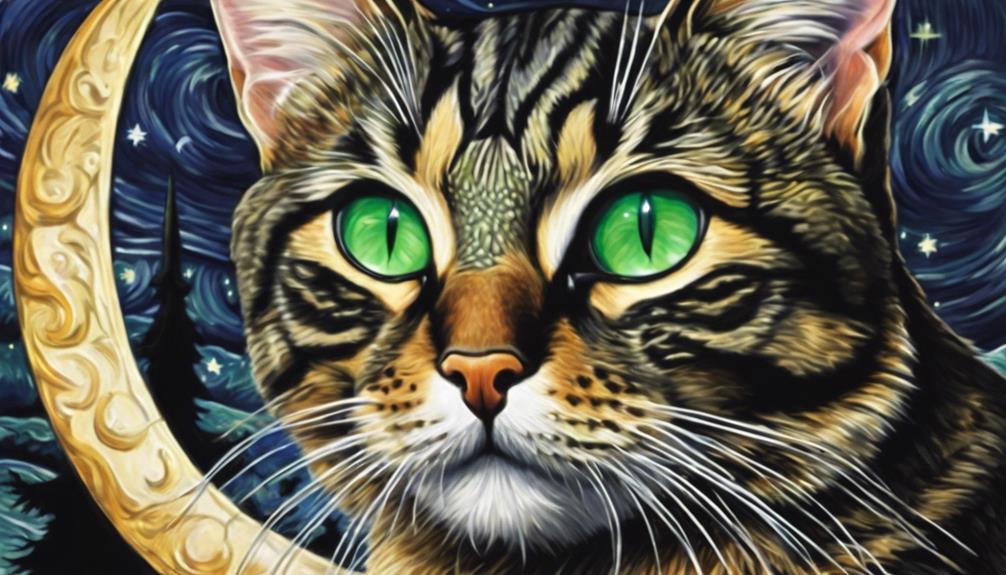
Inspired by the moon's beauty and mystery, Luna emerges as a popular and enchanting name choice for tabby cats. When selecting a name for your feline friend, consider the celestial charm and magical aura that Luna brings to the table.
Here are some reasons why Luna is a top pick for tabby cat names:
- Reflects Magic and Wonder: The name Luna encapsulates a sense of enchantment and fascination, making it a perfect fit for a whimsical and mysterious tabby cat.
- Versatile Gender Appeal: Luna is a versatile name that can suit both male and female tabby cats, adding a touch of elegance and grace to their persona.
- Fantasy Element: Choosing Luna for your tabby cat can also pay homage to Luna Lovegood from the Harry Potter series, infusing a hint of fantasy into your cat's identity.
Simba
When it comes to tabby cat names, 'Simba' stands out as a popular choice inspired by Disney's 'The Lion King.'
This moniker is ideal for tabbies with a majestic aura or those sporting orange fur.
'Simba' not only adds an exotic flair to your feline's identity but also embodies qualities of bravery, strength, and leadership.
Popular Tabby Cat Names
One of the most popular tabby cat names, especially for orange tabbies, is Simba, a name that embodies strength and playfulness inspired by the iconic character from 'The Lion King.'
- Simba is a name that exudes strength, bravery, and leadership qualities, ideal for a majestic tabby cat.
- This name perfectly reflects the vibrant and playful nature of orange tabbies.
- Choosing Simba for your tabby cat can bring a touch of nostalgia and magic to their identity.
Simba isn't just a name; it's a symbol of regality and confidence that suits many tabby cats, making it a top choice for feline companions who deserve a name as memorable and special as they are.
Unique Tabby Cat Names
Choosing a distinctive name like Simba for your tabby cat can infuse their persona with regal charm and a hint of adventure. Simba, inspired by the lion king in Disney's 'The Lion King,' embodies strength, courage, and leadership qualities, ideal for a majestic tabby.
The Swahili word 'Simba' translates to 'lion,' symbolizing power and regal demeanor, adding a touch of grandeur to your feline companion. This unique cat name evokes a sense of adventure and royalty, making your tabby stand out. Its recognizability and memorability guarantee that your beloved tabby isn't easily forgotten.
When seeking a name that captures both majesty and playfulness, Simba is a perfect choice among the array of tabby cat names.
Gender-Specific Tabby Cat Names
Let's explore how gender-specific tabby cat names like Simba can add character and charm to your feline companion.
Choosing a male tabby cat name such as Simba can highlight your cat's regal and powerful demeanor. The name Simba evokes qualities of strength, courage, and leadership, aligning perfectly with many tabby cats' characteristics. Opting for a gender-specific name like Simba can bring a sense of adventure and charisma to your tabby, resonating with fans of the iconic 'The Lion King' character.
Oliver

Oliver is a renowned name within the tabby cat community, appealing to many pet owners for its timeless charm and versatility. This classic moniker fits well with the friendly and sociable nature of tabby cats, making it a popular choice for both male and female felines.
When deciding on a name for your tabby cat, consider the enduring appeal and approachable vibe that Oliver brings to your beloved pet.
Popular Tabby Cat Names
When brainstorming popular tabby cat names, considering the distinctive characteristics of your feline friend can lead to a fitting choice. Here are some popular tabby cat names to inspire you:
- Tiger: Perfect for a tabby cat with bold stripes resembling a majestic tiger.
- Luna: A mystical name for a tabby cat with a mysterious and enchanting aura.
- Simba: Ideal for a tabby cat with a playful and adventurous spirit, reminiscent of the Lion King.
These names reflect the unique personalities and traits of tabby cats, helping you find the perfect moniker that resonates with your furry companion. Choose a name that captures the essence of your beloved cat and celebrates their individuality.
Unique Tabby Cat Names
In our search for distinct tabby cat names, one standout choice is the versatile and timeless Oliver. This name exudes charm and sophistication, making it a perfect fit for both male and female tabbies.
Its easy pronunciation and pleasant sound add to its appeal, making it a great choice for any tabby cat. Additionally, the name Oliver has literary ties to famous characters like Oliver Twist, which can bring a touch of literary flair to your feline friend's identity.
Famous Tabby Cat Names
With its origins rooted in popular culture and literature, the name Oliver stands as a prominent choice for tabby cats seeking a name that embodies charm and playfulness. Here are some fascinating facts about the famous tabby cat name Oliver:
- Inspired by the orange tabby in the animated movie 'Oliver & Company.'
- A nod to Oliver Twist, a classic literary character known for his adventurous spirit.
- Highlights the playful and curious nature of tabby cats, adding a touch of mischievousness and charm to their identity.
Bella
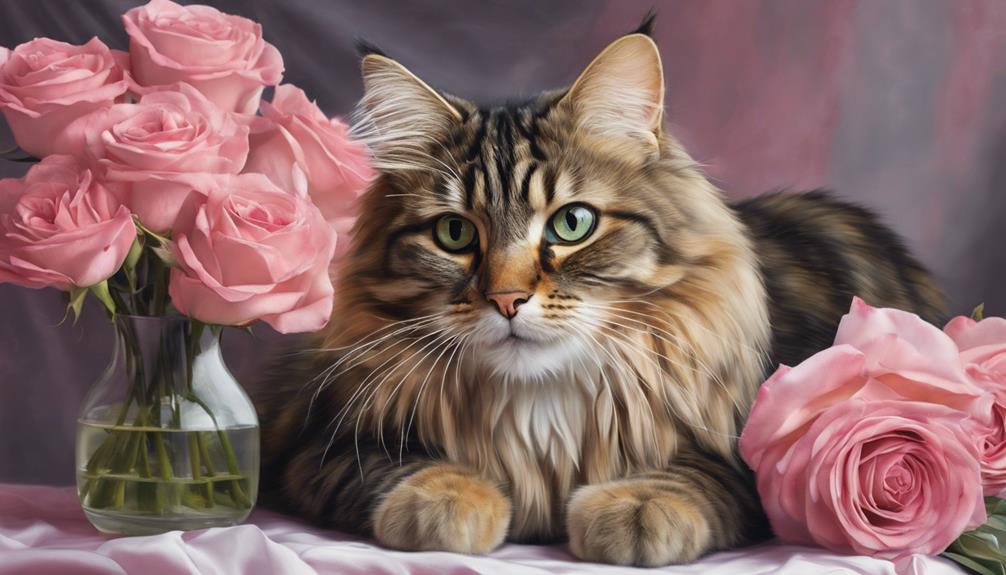
Amidst a sea of potential tabby cat names, 'Bella' shines as a timeless and beloved choice. The name 'Bella' exudes warmth and affection, making it a perfect fit for a tabby kitten. A cat deserves a name that captures its essence, and 'Bella' does just that with its sweet and melodic sound. This name is easy to pronounce, ensuring that both the owner and others can remember it fondly. 'Bella' reflects the beauty and charm of a tabby cat, embodying elegance and simplicity in just a few letters. Its versatility allows it to suit tabbies of various coat colors and patterns, making it a versatile and endearing choice for any tabby companion.
| Attributes | Description |
|---|---|
| Sweetness | Melodic and warm |
| Pronunciation | Easy to say |
| Versatility | Fits various tabbies |
| Elegance | Reflects beauty |
Whiskers
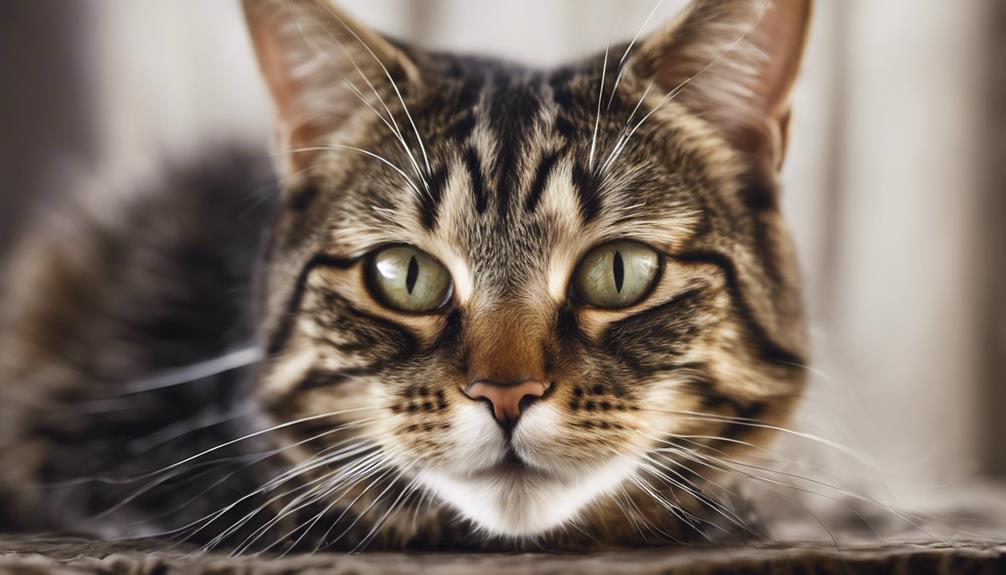
After exploring the endearing name 'Bella' for tabby cats, the focus now shifts to the fascinating world of whiskers on a cat's face. Whiskers, also known as vibrissae, aren't just ordinary hairs but serve as crucial tools for our feline friends.
Here are some intriguing facts about whiskers:
- Whiskers are specialized hairs on a cat's face that help them navigate their surroundings, almost like a built-in GPS system.
- The length of a cat's whiskers is generally about the same width as their body, aiding them in measuring tight spaces.
- Whiskers can provide insights into a cat's emotions; forward-facing whiskers often indicate curiosity and excitement.
Understanding the significance of whiskers can deepen our appreciation for the complexity and elegance of different cat breeds. So, next time you admire your tabby cat's whiskers, remember the essential role they play in their daily lives.
Ginger

Ginger stands out as a popular and fitting name choice for orange tabby cats because of its association with their warm and vibrant fur color. This name perfectly captures the playful nature often found in orange tabbies, reflecting their energetic and lively personalities. Whether your orange tabby is a male or female, Ginger is a timeless and classic name that suits them well. The simplicity of the name makes it easy to pronounce and endearing to call out when playing with your furry friend.
| Traits | Description |
|---|---|
| Vibrant | Reflects the lively and energetic nature of orange tabbies |
| Warm | Symbolizes the cozy and affectionate side of these cats |
| Playful | Highlights the fun-loving and spirited personality of orange tabbies |
| Classic | A timeless choice that never goes out of style for these cats |
| Gender-neutral | Suitable for both male and female orange tabbies |
Choosing Ginger as the name for your orange tabby can be a perfect match for their spirited and affectionate character.
Chloe
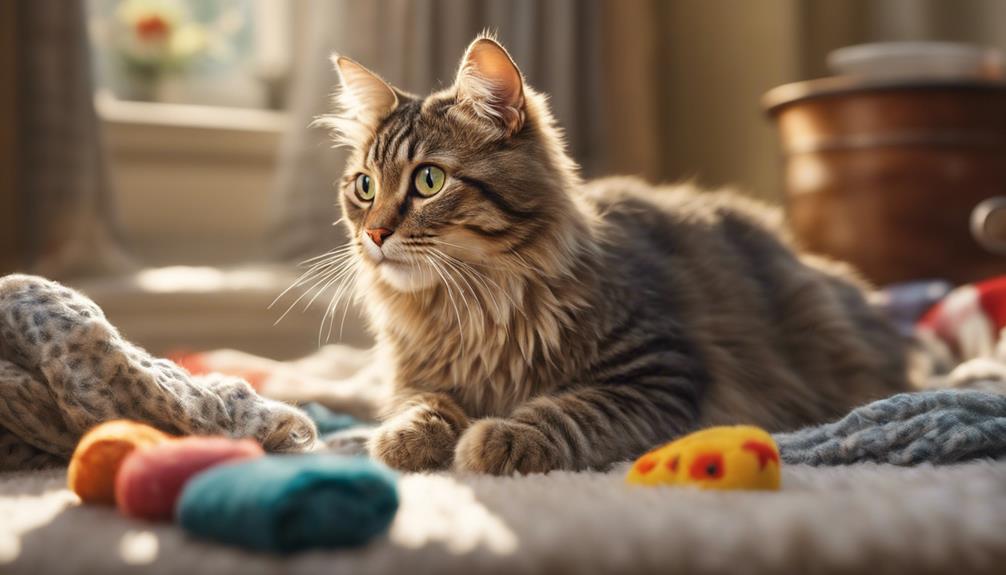
Chloe emerges as a highly favored and elegant name choice for female tabby cats, embodying sophistication and grace in a delightful manner. This name perfectly suits a cat with a charming and refined personality, making it an excellent fit for your feline companion.
Here are a few reasons why Chloe stands out as a top pick for your tabby:
- Cat Personality: Chloe is a name that resonates with the elegant and graceful demeanor often exhibited by female tabby cats, capturing their charm and poise effortlessly.
- Timeless Appeal: The timeless quality of the name Chloe adds a touch of class to your cat's identity, ensuring she stands out with a name that exudes sophistication.
- Celebrity Status: Many famous characters and celebrities share the name Chloe, further elevating its appeal and adding a touch of celebrity glamour to your beloved pet.
Consider bestowing the name Chloe upon your female tabby cat for a classic and beautiful moniker that reflects her unique personality and style.
Milo
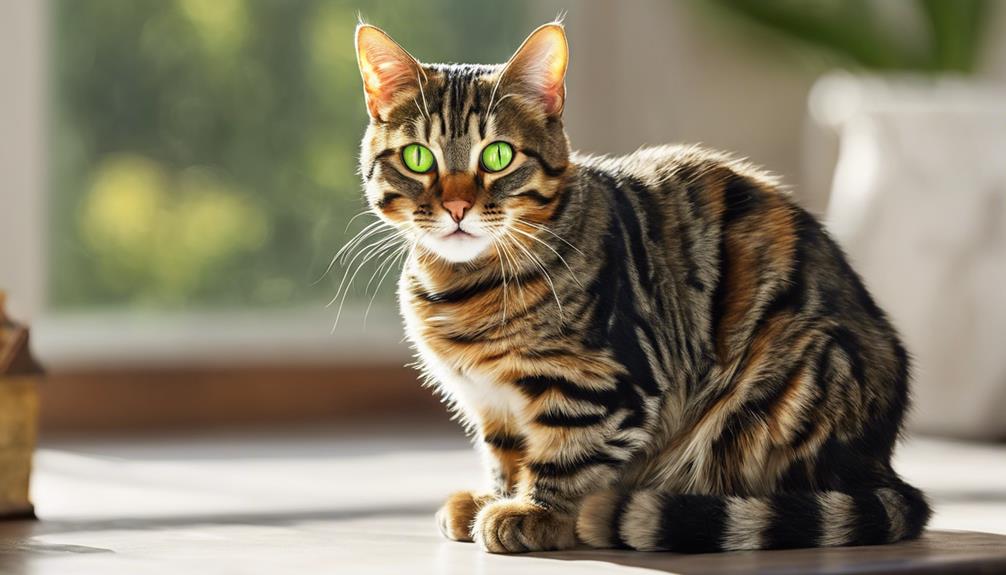
Milo remains a beloved and timeless choice for tabby cat names, appealing to both male and female felines with its friendly and easy-to-pronounce sound. This classic tabby cat's name suits a variety of coat patterns, capturing the charm and essence of these endearing pets. Many cat owners find Milo to be a perfect fit for their feline companions due to its simplicity and universal appeal.
When selecting a name for your tabby cat, consider the qualities that Milo embodies – friendliness, approachability, and a touch of elegance. Whether your tabby is a playful male or a graceful female, Milo is a versatile choice that can suit any personality. The name Milo has stood the test of time, resonating with cat lovers for generations.
If you're looking for a cats name that exudes warmth and familiarity, Milo might just be the ideal choice for your classic tabby companion.
Frequently Asked Questions
What Is the Best Name for a Tabby Cat?
We think the best name for a tabby cat should reflect their unique personality and markings. Consider names like Whisker, Stripe, or Luna. Let the name resonate with their individuality, creating a special bond.
What's a Good Name for a Striped Cat?
We think a good name for a striped cat could be "Shadow"! It captures their mysterious and sleek appearance. Plus, it's easy to say and has a cool vibe that suits their stealthy nature.
What Is the Rarest Tabby Cat?
We'll tell you about the rarest tabby cat: the silver tabby. Its stunning silver coat and unique markings make it a sought-after gem among feline enthusiasts. This elegant feline is a symbol of grace and sophistication.
What Is the Rarest Cat Name?
The rarest cat name is highly subjective, varying with personal tastes. Uncommon choices often draw inspiration from mythology or exotic languages. Delving into unique names can lead to discovering a one-of-a-kind moniker for your feline companion.
What Are Some Unique Tabby Cat Names Inspired by Ancient Gods?
If you’re looking for unique tabby cat names, consider drawing inspiration from ancient cat god names. Names like Bastet, the Egyptian goddess, or Freyja, the Norse goddess, can make for fitting and standout names for your tabby feline. These names pay homage to ancient deities while giving your cat a special moniker.
Conclusion
We've explored the top 10 tabby cat names, but do they hold any significance beyond being popular choices?
Some believe that a cat's name can influence their personality and behavior. While this theory may seem far-fetched, it's worth considering how a name can shape our perceptions and interactions with our feline friends.
Whether you choose Tiger, Luna, or another name from the list, remember that the bond you share with your tabby cat is what truly matters.
